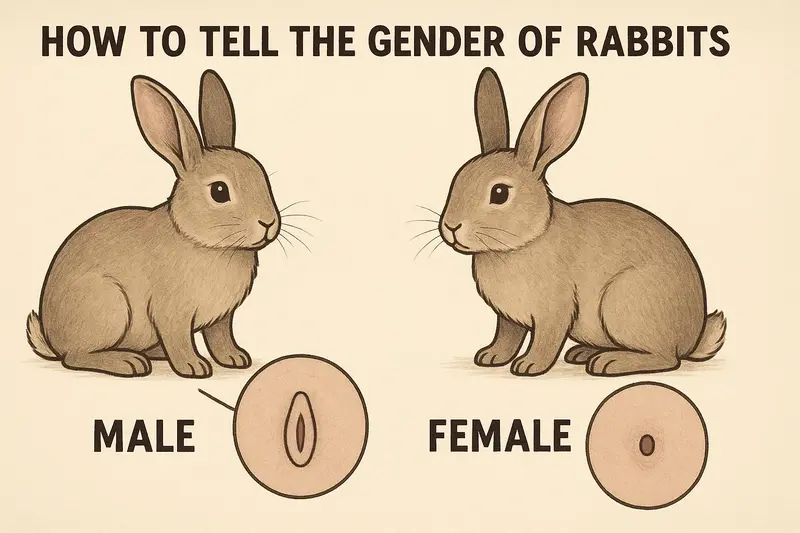Knowing how to identify a rabbit's gender is essential for proper care, breeding management, and disease prevention. Compared to cats or dogs, rabbits are more challenging to sex, especially at a young age. This article offers a detailed guide from a zoological and anatomical perspective on how to differentiate between male and female rabbits.
Mixing male and female rabbits unknowingly can lead to unintended pregnancies and overcrowding.
Knowing the sex helps with:
Controlled breeding
Appropriate housing
Managing aggressive or territorial behavior
Certain diseases, such as uterine cancer, affect only females, and knowing a rabbit's sex is crucial for prevention and veterinary care.

Sexual organs are not well developed; difficult but possible with care.
Sex organs begin to differentiate; sexing becomes more reliable.
Easiest period to identify gender due to fully developed external genitalia.
Gently hold the rabbit belly-up or support it in a secure position.
Use two fingers to gently press just in front of the genital area.
Penis appears as a cylindrical protrusion
Urethral opening is round
Mature males have visible testicles on both sides near the tail base
Genital slit appears V-shaped or with a long ridge
Urethral opening is smaller
No testicles present
Males often exhibit spraying and mounting behavior
Females may display nesting and fur-plucking behavior when hormonal
Experienced vets can palpate or use ultrasound to detect testicles or a uterus.
Advanced breeders may opt for DNA testing for absolute accuracy.
May resemble a female unless gently exposed via pressure.
Some males experience delayed testicle descent, requiring patience or a vet's assistance.
Improper handling can stress or harm the rabbit. Always be gentle and calm during the process.
If you're uncertain about your rabbit's gender, seek help from a vet or experienced breeder. Double-check before co-housing unfamiliar rabbits.
While rabbits may seem simple, determining their sex is crucial for responsible care. By learning the correct techniques and paying close attention, owners can avoid breeding accidents, manage health risks, and foster a healthier and more harmonious human-rabbit relationship.
animal tags: Rabbit Gender
We created this article in conjunction with AI technology, then made sure it was fact-checked and edited by a Animals Top editor.